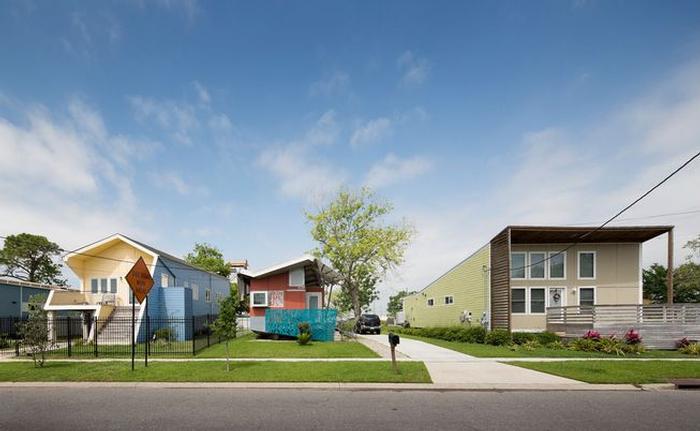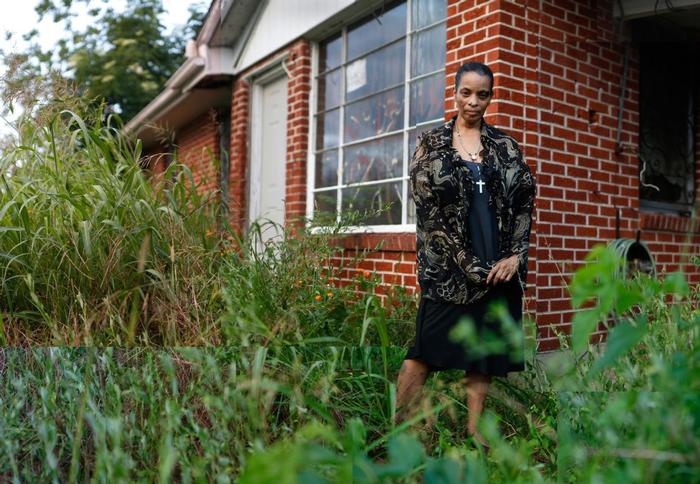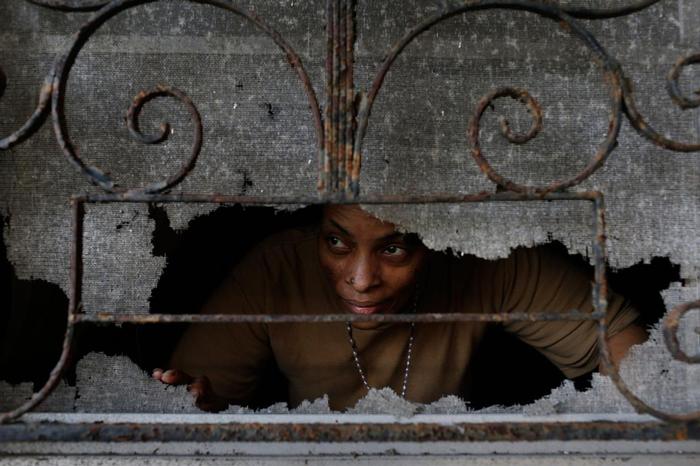[ID:2044] Shelters from the Storm | Making It Right in New OrleansUnited States The issue of homelessness in New Orleans is entangled with a history of political corruption, failures by structural engineers to create a successful levee system, and a plethora of factors that I have little control over. The following is a very personal plan I’ve made to confront homelessness in my community—with the platform I have in the city I’m from. I am sharing it in hope that others could see it and relate and apply this way of thinking to their own cities. I believe that New Orleans has the potential to set an international example of how to turn tragedy into opportunity and to address local need.
New Orleans holds a very strange group of people. Not many are willing to make their homes in a place that is below sea level and almost guaranteed to flood at least once in a lifetime. This way, the city holds, within its bowl-shaped topography, a strange assortment of people who are willing to lose all they have to live where they do. Because of this, people don’t usually make their homes in New Orleans on a whim or as a default; New Orleanians make their homes there intentionally. As a result, the city carries a thick spirit of intentionality in its residents, one that is exemplified in its homeless population. I’ve found in traveling that many of the homeless in places such as Austin, Portland, and DC have ended up in these places without much attachment to the respective cities. This has not shone true in my experience with the homeless in New Orleans. A large number of current New Orleans residents, homeless or not, have lost their homes, all their belongings, and even loved ones, and still return, always, “home to New Orleans.” I believe that the beautiful intentionality people possess in making New Orleans their home needs to be supplemented by intentional home-making, and I believe this can begin to happen in 5 specific ways.
1. Confront your home. The first step to confronting homelessness is confronting it in your home. There are definitely more glamorous ways to be a humanitarian than to face what you neglect driving to work everyday. In a way, it’s easier to reduce and respond to other cities’ problems than truly face your own. Activist Courtney Martin addresses this issue in her article entitled “The Reductive Seduction of Other People’s Problems.” In it, Martin writes, “If you’re young, privileged, and interested in creating a life of meaning, of course you’d be attracted to solving problems that seem urgent and readily solvable,” but she found that the reductive seduction, though not malicious, could be reckless and actively cause harm.
Our generation (and a few behind us) are obsessed with the same cycle: see a need elsewhere, travel there, start a nonprofit, meet the supposed need, return home. In this way, crises like homelessness are perpetuated by ill-informed altruism. Decades, and thousands of non-profits later, there is still hunger in our own cities. There is still homelessness. And there are still people content with “helping” others in this naïve way. This is dangerous for those whose problems go unaddressed, while those who come to ease an unfamiliar suffering leave unphased. If we can resist the urge to oversimplify and manage homelessness in other places, we can instead fall in love with the prospect of facing the systematic complexities and ending homelessness in our hometowns. Before confronting homelessness, we have to get past the glamour of elsewhere and the reductive seduction of other people’s problems.
2. Acknowledge privilege. With 80 percent of the city flooded after Hurricane Katrina and affordable housing almost non-existent, homelessness grew exponentially and without delay. Within hours, the wealthy and the poor were equalized by extremely sudden, indiscriminatory homelessness. The New Orleans homeless statistic peaked at an estimated 11,619 people in early 2007 but lingers at 4,903 people still living on the streets of the city (not including all of those who meet the HUD definition of homelessness, which includes those being released from hospitals and prisons with no place to go, for which the statistic is 7,130 homeless in New Orleans.) The rate of homelessness eased as more housing re-opened, yet with rent nearly double what it was pre-Katrina, homelessness remained a crisis with roughly 12 percent of those living in poverty in New Orleans facing homelessness each year, according to UNITY data.
The presence of the homeless community says a lot about a city. People aren't often born into their homelessness. They become homeless by a series of events and experiences; usually New Orleans’ homeless lost their homes in New Orleans. Homeless people I've met in the city are often, like any other New Orleanian, looking to tell you their Hurricane Katrina story—their narrative of how the storm impacted them—to be validated. To feel like someone relates or understands. Often, the only difference between their story and mine is that they never escaped or concluded their survival story. They're still drowning in the floodwaters, every day. In a way, there's no explanation for why they’re living on the streets and I am not. This is privilege in essence—advantages that fall in people’s laps and change just about everything about how their lives are perceived, by others and themselves. Though privilege has such a heavy hand in this issue, it doesn’t have to be the downfall of the city’s community. With such an arbitrary distribution of life changing circumstances, how much more should we be concerned with righting such a wicked and random wrong? Why shouldn't local architects, especially those who survived Hurricane Katrina, create homes for those who might as well be themselves?
3. Make sustainable homes, (but first make homes worth sustaining.) Sustainability has taken off in the past decade as a technological movement. The Make It Right Foundation has utilized Cradle to Cradle principles and materials to work toward technological sustainability, which affects everything from building methods to product selection. The Cradle to Cradle program approaches design and assembly biomimetically, looking to mode human industry around nature’s processes. This is a huge stride toward environmentally conscious housing. Sort of.
What if we took it a step further and designed homes that not only mimicked the nature of biology but the nature of sociology and anthropology, and did so locally. Sustainability is more than an issue of technology, but an issue of culture. It is an issue of places and people. How do we not only sustain the house as a building but the home as a place? We need to be thinking of designing homes that fight more than flood waters but the oppressed spirit that comes from being controlled by them. Why shouldn’t these houses go as far as to mimic the vibrancy, not just in color choice and form, of the New Orleans community? I believe this can be done architecturally through layout, materiality, and light quality. And this shouldn’t take much on the part of the designer, only awareness and an attempt at understanding. New Orleans has a strong essence about it that needs to be sustained in its residential design. I don’t think that each individual family in the Lower Ninth Ward needs a custom house. However, I do think that research needs to be done by the architects designing them in order to create homes that are made for boiling crawfish on rainy, humid Sunday evenings in New Orleans. I believe in an architect’s ability to design for a place that is not their home, but I think the architect needs to research more than how to create a house that will survive a hurricane. People need homes that are conducive to everyday New Orleans living, which is all too often overlooked when architects stop at designing conventionally sustainable, weatherproof houses in neighborhoods like the Ninth Ward.
One cannot address New Orleans homelessness without addressing floodwater. They are directly proportional. The tragedy of hurricanes expose a part of the city that is so opposite its essence of hospitality and vibrancy. So far in New Orleans, landscape has been used to block out water (with levees) and buildings used to protect residents from water (through elevation.) The Make It Right Foundation already does this successfully, but what if it took on an additional challenge: to reintroduce water to architecture as something that isn’t to be feared or avoided. Not as something that brings about chaos, but as something that inspires hope. The Make It Right Foundation has created homes that are elevated off the ground to sit above floodwater and prevent leakage into the homes. Thom Mayne’s design, called the FLOAT House even functions as a boat by withstanding flooding by floating as water levels rise. Despite being unique in design and technologically progressive, it has received much criticism. A comment below its Dezeen article referred to it as “Another lovely display case for the viewing and exploitation of Katrina victims.” And says the only architectural solution the design offers is to “strand families dangerously in floating raft houses.”
Addressing homelessness in the city of New Orleans is much more complex than designing waterproof houses, it deals with educating residents and architects alike to understand and utilize water. This is an opportunity for relevant design, incorporating water and reintroducing it to the people of the city as something to be understood and controlled rather than dreaded and avoided, possibly even by designing houses to accept and process water rather than simply shedding it.
4. Consult data. Data shows the futility of managing homelessness. Homelessness first surfaced as a national issue in the 1980s. At this time, it was widely assumed that homelessness fit a “normal distribution” in which the majority of the homeless population was in the same state of semi-permanent distress. Researchers soon found that there was, and is, no such normal distribution. Homelessness occurred in vast extremes with some of the homeless population only remaining homeless for one or two days. On the other end of the spectrum are the chronically homeless, which make up a minority percentage of the national homeless population. Currently, 48% of the homeless population of New Orleans is chronically homeless (UNITY data.) The face of New Orleans’ chronic homelessness , to me, is Angell Marie Boutte. Boutte was rescued from her roof by helicopters during flooding, and her home hasn’t been touched since. Boutte has been living in her house without electricity since 2007. She is one of hundreds of squatters living in their flood-damaged houses, 10 years after Hurricane Katrina.
According to Malcolm Gladwell in his book What the Dog Saw, this is good news—the concentration of need allows for a more specific response. “The bad part is that those few hard cases are hard…They need time and attention and lots of money. But enormous sums of money are already being spent on the chronically homeless, and…the kind of money it would take to solve the homeless problem could well be less than the kind of money it would take to ignore it,” notes Gladwell. In order to design into the future a city without homelessness, we must be able to envision it. This is difficult when poverty in New Orleans is mixed in with this extremely strange dynamic of flooding and people who chose to live in a place that will positively continue to flood. Which is further complicated by factors like unemployment rates, mental illness, substance abuse, alongside qualitative factors such as quality of life, family dynamics, lack of validation, and nostalgia.
This realization led me to where I think most architects and most New Orleanians are. It is not a place of apathy, but one of being completely overwhelmed. Instead of letting the complexity of the issue paralyze us, we must break into action—not through reduction of other people’s problems but through an intentional plan to face our own. Gladwell explains the story of a man named Murry Barr, who he refers to as “Million Dollar Murry.” He explains how Barr, a chronically homeless man in downtown Reno, spent his life in and out of prisons, hospitals and mental institutions. Murray Barr used more healthcare dollars than almost anyone in the state of Nevada. A bicycle cop in downtown Reno commented “It cost us one million dollars not to do something about Murray.”
In response to situations of chronic homelessness like Angell Boutte’s and Murray Barr’s, a strategy called Housing First has arisen. This approach began in Utah in 2005 by moving chronically homeless people out of shelters and into their own apartments. There, social workers were able to provide services in a more stable setting. The model is based on tackling the toughest, most visible part of the problem. Despite much skepticism, the strategy was a complete success. In Utah, there has been "a 72 percent decrease (in chronic homelessness) overall since enacting the plan” according a report release in 2014 by the Utah Division of Housing and Community Development.
According to UNITY data released in 2012, 2,811 homeless people like Angell Boutte were living in approximately 42,000 abandoned buildings in New Orleans on any given night. What if we used the money spent funding over 60 agencies that manage homelessness in the city of New Orleans to fund renovation of abandoned buildings in order to house New Orleans’ chronically homeless?
Approaches like Housing First frame the issue of homelessness around research rather than ideology. It is built around facing the toughest, most visible parts of the problem. The Former Executive Director of the Interagency Council on Homelessness in the US, Philip Mangano believes that, like slavery and war, homelessness should be treated no differently, because according to him “you do not manage a social wrong. You should be ending it.”
5. Educate designers. Why aren't design programs incorporating this into their curricula? I'm not talking about a semester long urban planning studio where students "reach out to the community" in the poorest neighborhood near them, year after year fixing less and agitating the community more. In the end, these studios often create nothing more than interesting design-build portfolio pages and make the community a victim of another uninformed design project.
I'm talking about truly educating architecture students on local issues. If I had to take Louisiana history as a high school student, why shouldn't I have to take Louisiana homelessness as an architecture student? I propose a required class that connects architects to the local need for their services, burdening them and allowing them to act on that burden. Not through a semester long design build-project, but through years of design proposals and research. Why aren't we at least exposed to homelessness in our areas through the lens of architecture schooling and asked what we'll do about it? Why are we not challenged with this?
The essay above is not so much an essay at all. It is more so a letter to New Orleanians and to architects. It also functions as a to-do list for myself. Confront your home | acknowledge privilege | make sustainable homes (but first make homes worth sustaining) | consult data | educate designers. Hopefully it reaches and impacts those thinking of homelessness or architecture, and hopefully those two things never exist very far apart from each other in our minds. Because architecture is the art and skill of place-making, and the job of an architect is to provide a place for people’s lives to transpire and be enriched. And what better opportunity for this than confronting homelessness.
If you would like to contact this author, please send a request to info@berkeleyprize.org. |




